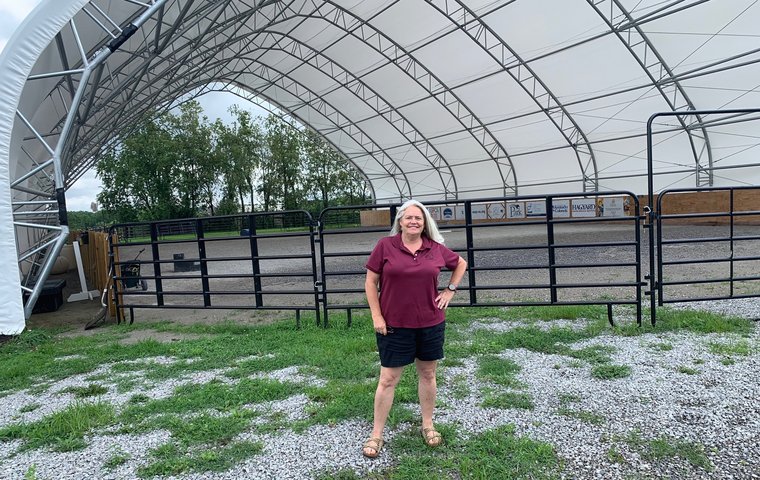
With the recently passed U.S. federal ban on the export of horses for slaughter, the already hard-pressed Thoroughbred aftercare community is likely to face even greater pressure to find homes for racehorses no longer wanted on the racetrack.
Which is where those dedicated people at organisations like the Old Friends retirement facility in Kentucky and the Thoroughbred Aftercare Alliance come in - both featured in the first 2 parts of this 3-part series on horse welfare in America. And it certainly highlights the vital role of the Kentucky Equine Adoption Center (KyEAC) in Jessamine County.
The center, the subject of part 3, is the largest facility of its kind in the Bluegrass state. It takes all breeds, but about half its intake are ex-racehorses. It is not a sanctuary for retired horses, however. The aim is to rehome the horses with people who adopt them, whether to go on as riding horses or just as companions.
Patrick Lawrence Gilligan visited the center and spoke to KyEAC development director Kelli Sorg.
Gilligan: When did the facility start, and about how many horses do you rehome each year?
Sorg: We’ve been here since 2009. We take all breeds of horses. We take horses when, for whatever reason, their owners can no longer keep them.
We have 72 acres here and we generally have around 50 horses give or take. Over the course of the pandemic, I think people started to take stock of what was important to them. In 2019, we adopted out about 58 horses. In 2020, we adopted out about 120. And people have been very generous towards us in the past year. Our arena was donated, our equipment shed, our truck, our tractor. The grantors were very, very generous, and so we have expanded our ability to do more.
How does the rehoming process go?
We have worked with ASPCA (American Society for Prevention of Cruelty to Animals) and Right Horse, who gave us a significant grant to develop a fast-track program, which takes approved racehorses right off the track, and we aim to reschool them and rehome them within 90 days.”
We have three full-time trainers here who work with them and they each have their niche. Abby Davidson is a Thoroughbred lover and can really listen to them and is great at patching any holes in their training.
None of our horses live inside. We like them to live like horses and to let down, when they relax and take a deep breath. It makes them much easier to train after they lose any nervous edge.
I believe some of your horses play other roles?
Another program we run is Support a Special Horse. It teaches people who don’t own horses how to look after and own one. It’s an 8-week curriculum.
Karen [Gustin], the executive director, and I are both certified in Equine Assisted Learning, so we do therapy for veterans with post-traumatic stress, and also Equine Assisted Learning for corporations where they bring their staff. It’s great for communication skills for staff training. Horses are both mirrors and windows.
One of our Thoroughbred’s, Ellis Offspring, is an absolute rock star. When people approach her in an open way, she will do anything for them. But anyone who has an attitude she won’t do a thing for them! It’s all body language. “I know it helps because my own son is a veteran and a deputy sheriff.
And actually one of our horses is a veteran! Bullet, he is a 22-year-old Percheron who was based at the Arlington cemetery. He pulled the caissons for military funerals.
How is the center funded?
As development director, I am in charge of fundraising, dealing with grants, that kind of thing. Regarding the racing industry, the Thoroughbred Aftercare Alliance is our main grantor. Most of our other grantors are all-breed. I think, if a bit could be put aside at each stage of the Thoroughbreds’ lives, I feel everyone would be better off.
At the moment, it is still a bit catch-as-catch-can. The ones that end up here are the lucky ones. It would be nice if, from the moment breeding plans are made, there was a system in place to take care of them all the way through.
Would you like to add anything?
Thoroughbreds are bred to be fast, but they are sensitive and I don’t want to say magical, and there is something about them in the way they think, and that’s one of the things I love about them. There is still so much ahead of them, so it is really a shame if we let them slip through our fingers.
When the truck and trailer pulls out to go to their new home, it is one of the great things we do here - we give the horses another life, a home, a new role.


